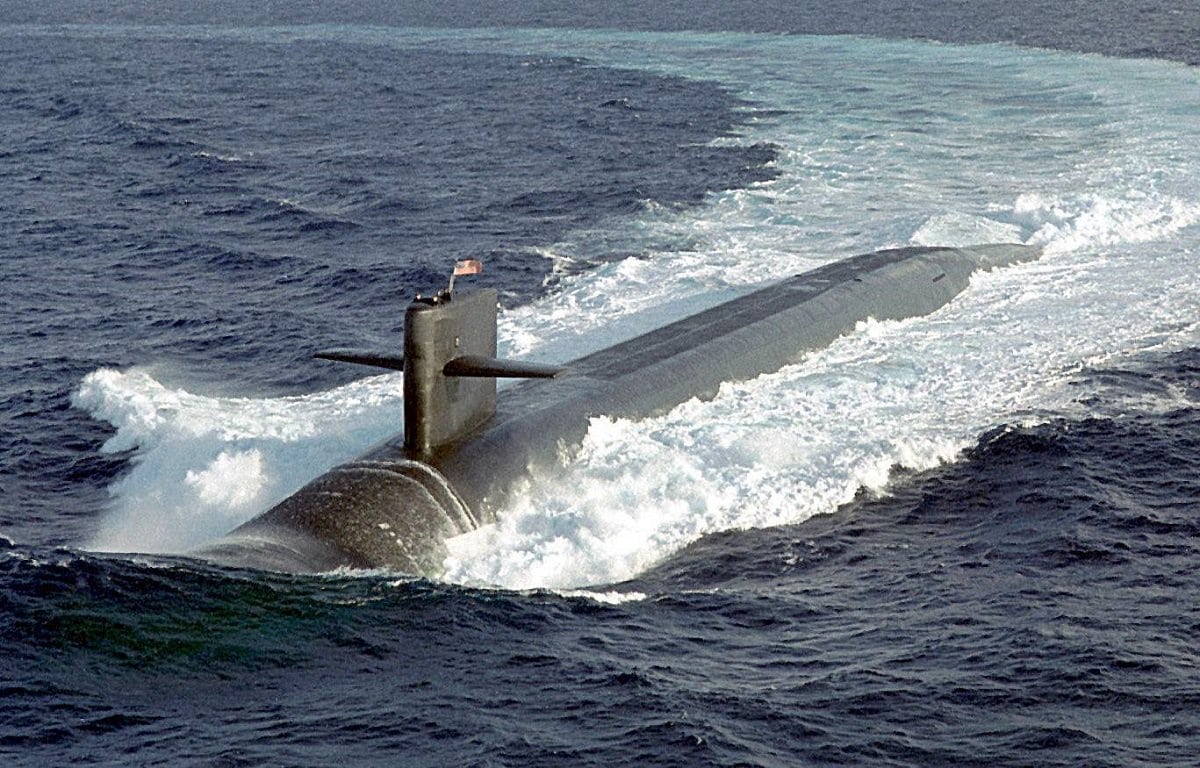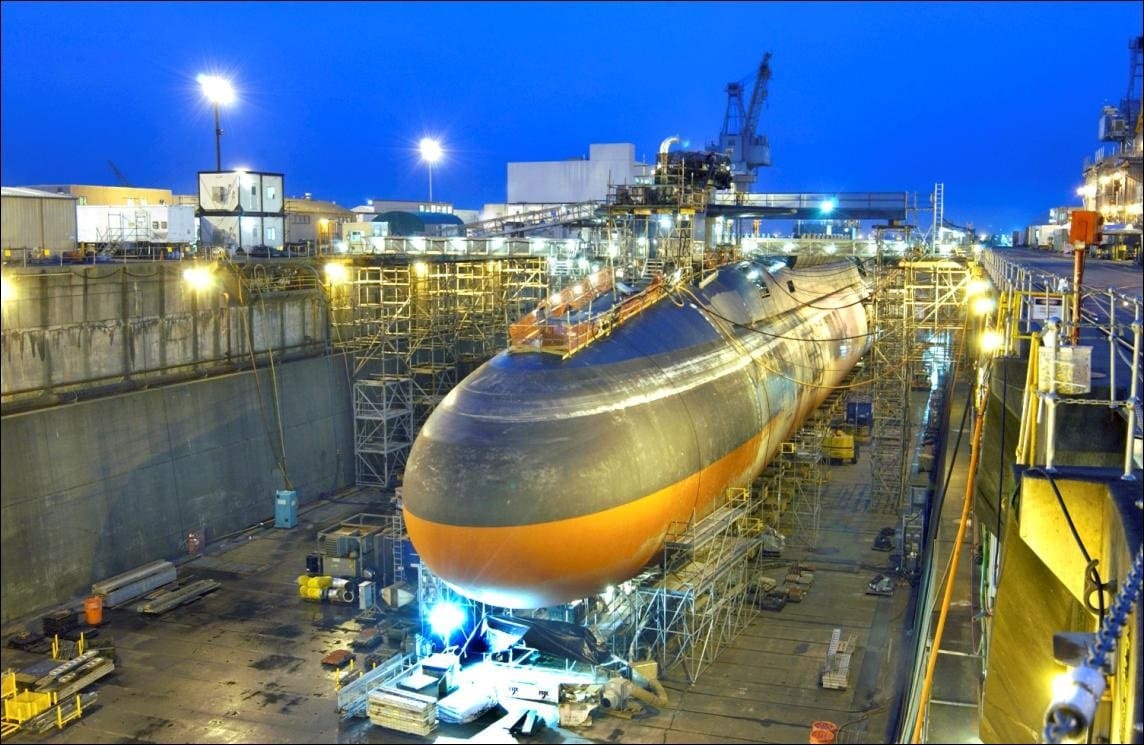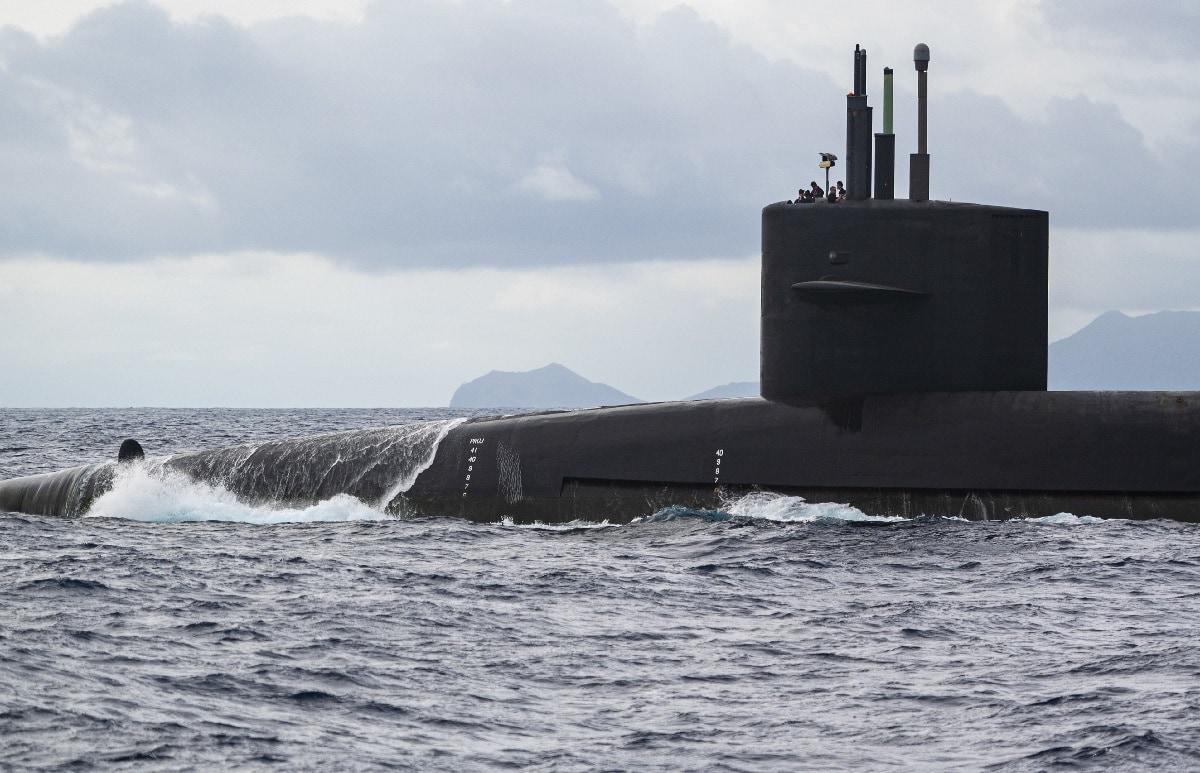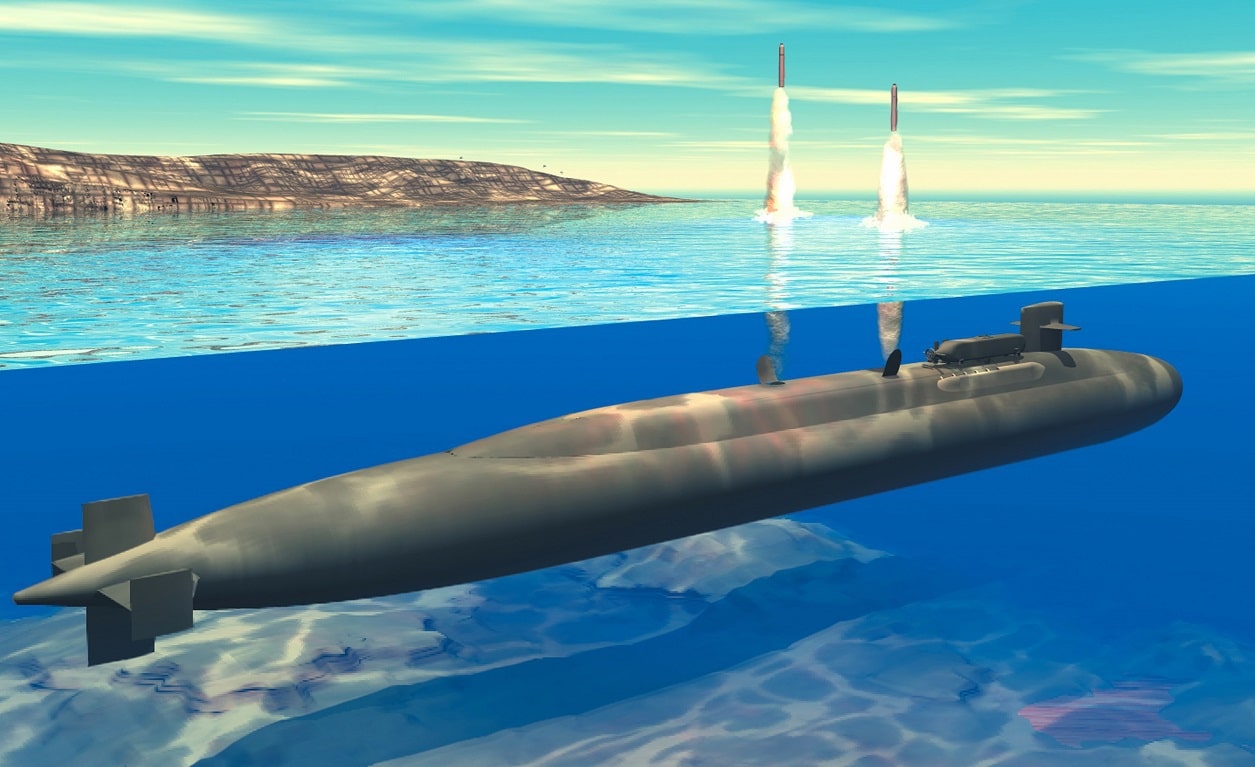Aging Ohio-Class Submarines Could Get an Extension – The United States Navy currently operates 18 Ohio-class submarines, all of which were built between 1976 and 1997. While there have been plans to retire some of the older boats, the Navy may have to keep them around a little while longer. According to a report from The Drive, up to five of the Ohio-class ballistic missile submarines (SSBNs), along with four others of the class that were converted into guided-missiles submarines (SSGNs) are currently under evaluation for short-term life extension.
Rear Adm. Scott Pappano, program executive officer for Strategic Submarines confirmed that the nuclear-armed Ohio-class SSBNs, as well as the SSGNs, would be examined for “short-repair availability.” He explained the need to maintain the boats during an Advanced Nuclear Weapons Alliance Deterrence Center online event held on May 12.
As the largest subs ever constructed for the U.S. Navy, and the third-largest submarines ever built, the boats of the Ohio-class were initially designed to carry the concurrently developed Trident submarine-launched ballistic missiles. A total of 18 of a planned 24 Ohio-class submarines were constructed by the Electric Boat Division of General Dynamics between 1981 and 1997.
Following the START II treaty, the number of U.S. Navy strategic missile submarines was limited to 14 beginning in 2002. Rather than simply phasing out or decommissioning four of the boats, the U.S. Navy opted to convert the four to conventionally armed nuclear-powered cruise missile submarines (SSGNs). Electric Boat was awarded a contract in September 2002 to convert the four oldest of the class including USS Ohio (SSBN 726), Michigan (SSBN 727), Florida (SSBN 728) and Georgia (SSBN 729). 726 entered the shipyard on Nov. 15, 2002, and completed the conversion in December 2005 and deployed for the first time in October 2007.
Columbia-class Delays
Last month, a Congressional Research Service report – “Navy Columbia (SSBN-826) Class Ballistic Missile Submarine Program: Background and Issues for Congress (Updated April 27, 2022)” – warned that the United States could face a delay with lead Columbia-class submarines, which could seriously impact the United States nuclear deterrent abilities.
Since 2013, the U.S. Navy has consistently identified the Columbia-class as one of its top priority programs. It calls for the design and construction of 12new SSBNs to replace the Navy’s current force of 14 aging Ohio-class SSBNs. The service procured the first Columbia-class boat in FY2021 and wants to procure the second boat in the class in FY2024.
“The Navy’s proposed FY2023 budget requests $3,079.2 million (i.e., $3.1 billion) in continued procurement funding for the first Columbia-class boat and $2,778.6 million (i.e., about $2.8 billion) in advance procurement (AP) funding for subsequent boats in the class, for a combined FY2023 procurement and AP funding request of $5,857.8 million (i.e., about $5.9 billion),” the report noted.
A critical factor in the delay with the Columbia-class has been the state of America’s shipyards.
“U.S. Navy submarines are built at two shipyards—General Dynamics’ Electric Boat Division (GD/EB) of Groton, CT, and Quonset Point, RI, and Huntington Ingalls Industries’ Newport News Shipbuilding (HII/NNS), of Newport News, VA. GD/EB and HII/NNS are the only two shipyards in the country capable of building nuclear-powered ships. GD/EB builds submarines only, while HII/NNS also builds nuclear-powered aircraft carriers and is capable of building other types of surface ships. The two yards currently are jointly building Virginia-class attack submarines,” the CRS warned.
In addition to GD/EB and HII/NNS, the submarine construction industrial base also relies on hundreds of supplier firms, as well as laboratories and research facilities, in numerous states. Much of the total material procured from supplier firms for the construction of submarines comes from sole-source suppliers, which can create bottlenecks and greatly impact the supply chain.
Keeping the Ohio-class in Service
The Ohio-class SSBNs were initially constructed with 30-year lifecycles, which have already been extended to 42 years. However, those service life extensions are still expiring between 2027 and 2040.

USS Maine (SSBN-741). Image: Creative Commons.

USS Ohio SSGN Conversion. “040315-N-0000H-001 Bremerton, Wash. (March 15, 2004) – Night falls at Puget Sound Naval Shipyard and Intermediate Maintenance Facility, Bremerton, Wash., as work continues on the strategic missile submarine USS Ohio (SSGN-726). The USS Ohio is one of four Trident Submarines undergoing conversion to a new class of guided missile submarines. The SSGN conversion program takes Ohio-class ballistic missile submarines through an extensive overhaul that will improve their capability to support and launch up to 154 Tomahawk missiles. They will also provide the capability to carry other payloads, such as unmanned underwater vehicles (UUVs), unmanned aerial vehicles (UAVs) and Special Forces equipment. This new platform will also have the capability to carry and support more than 66 Navy SEALs (SEa, Air and Land) and insert them clandestinely into potential conflict areas. U.S. Navy photo by Wendy Hallmark.

PACIFIC OCEAN (Oct. 21, 2020) The Ohio-class ballistic-missile submarine USS Henry M. Jackson (SSBN 730) gets in position to receive a payload of supplies from an MV-22B Osprey in the vicinity of the Hawaiian Islands. Underway replenishment sustains the fleet anywhere/anytime. This event was designed to test and evaluate the tactics, techniques, and procedures of U.S. Strategic Command’s expeditionary logistics and enhance the overall readiness of our strategic forces. (U.S. Navy photo by Mass Communication Specialist 1st Class Devin M. Langer)
“It is very hard to get past 42 years, we’re going to at least evaluate that in the background and say, okay the first time we’d have to actually start thinking about doing that, actually do one, would be in about the FY ’29 timeframe,” warned Pappano. “So we’re doing the evaluations right now on what it would take to do a short repair availability, short-ish repair availability to extend those ships for a couple of years as a risk mitigator if need be.”
Now a Senior Editor for 1945, Peter Suciu is a Michigan-based writer who has contributed to more than four dozen magazines, newspapers, and websites. He regularly writes about military hardware, and is the author of several books on military headgear including A Gallery of Military Headdress, which is available on Amazon.com. Peter is also a Contributing Writer for Forbes.

